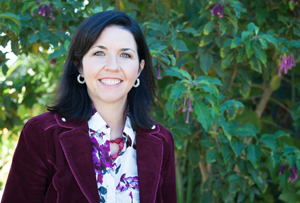In October, UC Santa Cruz joined the systemwide Cool Campus Challenge, a competition between the UC campuses to fight climate change by reducing our collective carbon footprint. Throughout the UC system, participants are making pledges and recording their actions to accumulate points. At the end of the day on December 10, the campus with the most points wins.
But really, every campus—and all of us—will be winners, because the Cool Campus Challenge is a fun way to encourage everyone to become mindful stewards of our environment and help ensure our planet is healthy for generations to come.
Santa Cruz is one of the smaller campuses, but we have had a great rate of participation with more than 1,400 people signing up. This is a testament to your passion—and if you haven't joined, there's still time for you to sign up and earn points. As an added incentive, we're raffling off a Momentum bicycle, and each participant on our campus with more than 10,000 points will be eligible to win.
The Cool Campus Challenge is one of many systemwide efforts to reduce UC's carbon footprint. In 2013, President Janet Napolitano announced a carbon neutrality initiative that commits the university to emitting net zero building and vehicle fleet gases by 2025. This commitment is a first for any major university system. Last month, the university joined the Breakthrough Energy Coalition led by Bill Gates, which is investing in technology to address climate change.
At UC Santa Cruz, we have established a robust strategic energy program. We identify and implement energy efficiency projects and receive deep rate reductions from PG&E that help subsidize these projects. This program has enabled the campus to reduce its emissions by 15 percent over the past eight years.
One of our newest carbon reduction initiatives is our Climate and Energy Strategy. This is a year-long collaborative study that will help us identify the most cost-effective, impactful strategy for achieving carbon neutrality. As part of this, we are auditing energy use in 50 of our most energy intensive buildings on campus to identify carbon reduction measures that can be implemented through our partnership with PG&E. It also includes a renewable energy feasibility study that is focused mainly on solar photovoltaics; we want to identify all possible locations throughout campus where solar is feasible.
While much has been done, a lot of work remains. It will take each and every member of our community to meet our carbon neutrality goal. I look forward to partnering with you on this work. In the meantime, I encourage you to join the Cool Campus Challenge!



